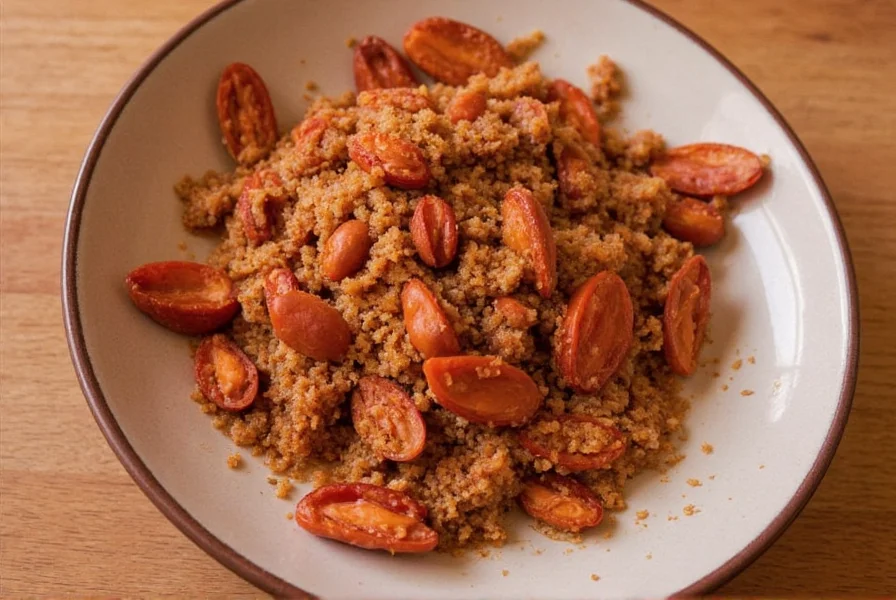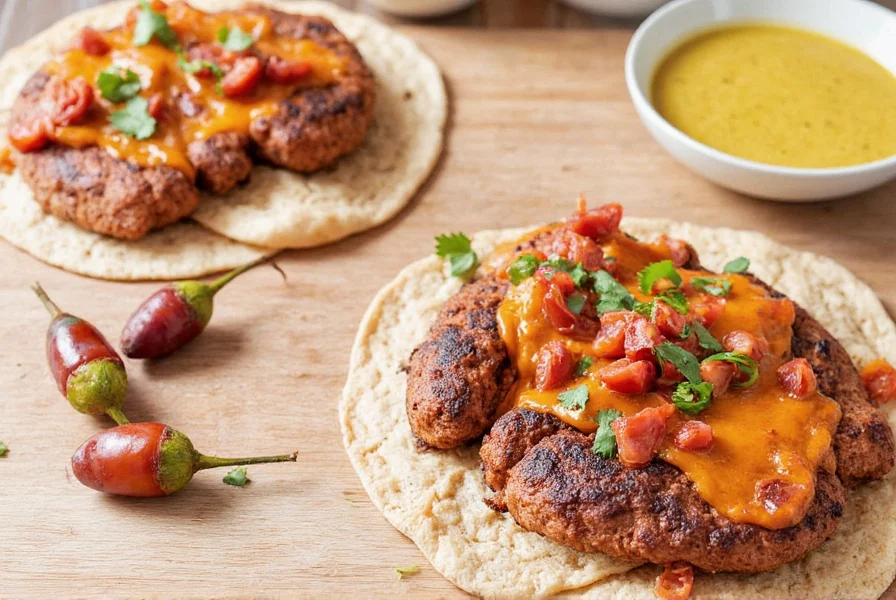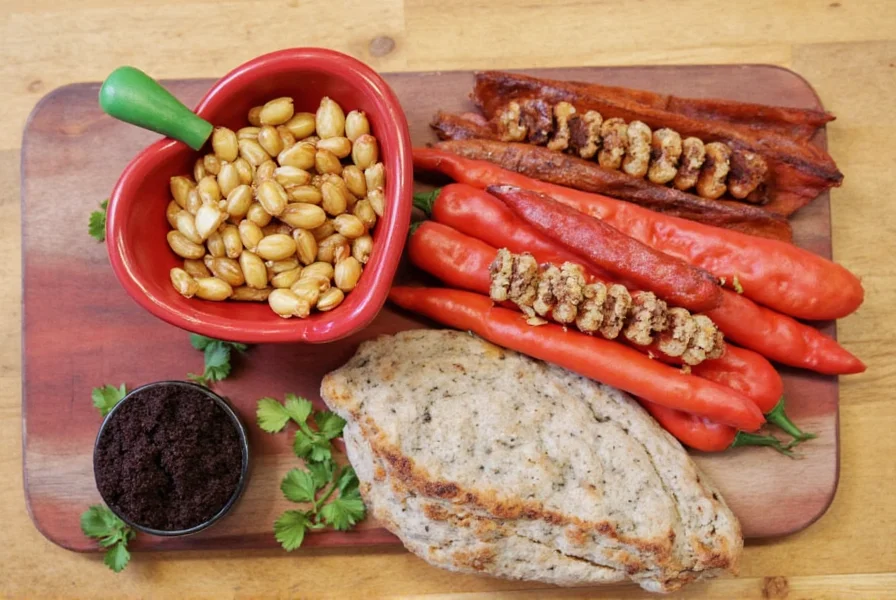Ancho Ranch: The Spicy Secret Every Kitchen Needs
Whether you're a seasoned chef or someone who just loves a good kick in your tacos, you’ve probably come across the term ancho ranch. But what exactly is it? Is it a place? A flavor profile? A spice blend?
In this article, we’ll peel back the layers—just like an ancho chili—and explore everything you need to know about this beloved Southwestern-inspired flavor. From its rich flavor profile to how you can use it in your own kitchen, let’s dive into the world of ancho ranch.
Table of Contents
- What Is Ancho Ranch?
- Flavor Profile Breakdown
- Top 5 Ways to Use Ancho Ranch
- Buying Guide: Choosing the Best Ancho Ranch Seasoning
- Spicy Recipes to Try at Home
- Frequently Asked Questions
- Final Thoughts
What Is Ancho Ranch?
The term “ancho ranch” may sound like a cattle operation in Texas, but in the culinary world, it refers to a flavor combination rooted in the American Southwest and Mexican cuisine. At its core, it's a fusion of:
- Ancho Chili Powder: Dried poblano peppers that are mildly spicy with sweet, smoky notes.
- Ranch Seasoning: That iconic zesty blend of garlic, onion, dill, parsley, and buttermilk powder often found on chips or salad dressings.
Together, they form a bold yet balanced seasoning mix that adds complexity and earthy warmth to dishes. It’s the perfect bridge between traditional Tex-Mex and modern comfort food.
Flavor Profile Breakdown
To truly appreciate ancho ranch, let’s break down its unique taste components:
| Taste Element | Description | Examples in Dishes |
|---|---|---|
| Smokiness | Comes from dried ancho chilies, giving depth and barbecue-like richness | Grilled chicken, smoked potatoes |
| Slight Heat | Mild spiciness with a lingering warmth (around 1,000–2,000 SHU) | Fries, cornbread, burgers |
| Herbaceousness | From ranch seasoning ingredients like dill, chives, and parsley | Dips, dressings, mashed potatoes |
| Creaminess | Buttermilk powder adds a subtle dairy note | Mac and cheese, sour cream dips |
Top 5 Ways to Use Ancho Ranch
Ready to start experimenting? Here are five easy and delicious ways to bring ancho ranch into your daily meals:
- Make a Creamy Dip: Mix 1 tbsp of ancho ranch seasoning into sour cream or Greek yogurt for a quick dip for veggies or chips.
- Season Fries or Roasted Veggies: Sprinkle over oven-baked fries, cauliflower bites, or roasted squash before serving.
- Marinate Meats: Blend with olive oil, lime juice, and garlic for a smoky marinade for chicken, pork, or steak.
- Boost Popcorn: Toss freshly popped popcorn with melted butter and ancho ranch for a savory snack twist.
- Bake into Breads: Stir into cornbread, biscuits, or scones for a Southwest flair that will surprise your guests.

Buying Guide: Choosing the Best Ancho Ranch Seasoning
If making your own blend isn’t your thing (or you want something ready to go), here’s how to choose a high-quality commercial ancho ranch seasoning:
| Product | Key Ingredients | Flavor Highlights | Best For | Recommended Uses |
|---|---|---|---|---|
| Brand A – Smoky Ranch Fusion | Ancho chili, onion, garlic, paprika, buttermilk powder | Smoky & creamy with a hint of sweetness | Beginners and families | Dips, burgers, potato wedges |
| Brand B – Bold Ancho Ranch | Ancho, cumin, black pepper, salt, lemon zest | More heat and zest than others | Spice lovers | Meat rubs, grilled veggie skewers |
| Brand C – Organic Southwest Mix | Organic ancho, organic onion, garlic, herbs | Clean label, mild but flavorful | Health-conscious cooks | Salads, soups, grain bowls |
Pro Tip: Look for products with real spices and no unnecessary fillers like maltodextrin. Also, check the sodium content if you’re watching your salt intake.
Spicy Recipes to Try at Home
Let’s get cooking! Here are three beginner-friendly recipes using ancho ranch:
1. Ancho Ranch Popcorn
- Ingredients: Popcorn kernels, butter, ancho ranch seasoning
- Instructions: Pop kernels in a large pot, melt butter, stir in 2 tsp seasoning, pour over popcorn, and toss.
2. Smoked Chicken Tacos with Ancho Ranch Slaw
- Ingredients: Smoked chicken breast, cabbage slaw, lime crema, taco shells
- Instructions: Toss shredded chicken with ancho ranch. Top warm shells with slaw tossed in ancho ranch dressing.
3. Ancho Ranch Cornbread
- Ingredients: Cornmeal, flour, baking powder, buttermilk, egg, butter, ancho ranch seasoning
- Instructions: Mix dry ingredients, add wet, stir in 1–2 tbsp seasoning, pour into pan, bake at 400°F (200°C) for 20 minutes.
Frequently Asked Questions
Q: Can I substitute ancho ranch seasoning?
A: If you don’t have it on hand, combine equal parts ancho chili powder and ranch seasoning. Adjust to taste!
Q: Is ancho ranch spicy?
A: Mildly so. The heat comes mostly from the ancho chili side, which is much milder than jalapeño or habanero.
Q: How long does homemade ancho ranch last?
A: In an airtight container, it should stay fresh for up to 6 months. Store in a cool, dark place to preserve flavor.
Q: Can I make it vegan?
A: Yes! Just replace the buttermilk powder with nutritional yeast or leave it out entirely for a vegan-friendly version.
Final Thoughts
Ancho ranch is more than just a buzzword—it’s a versatile, flavorful addition to any pantry. Whether you buy it pre-made or whip up your own batch, this fusion seasoning bridges the gap between smoky chilies and creamy ranch flavors in a way that’s both exciting and comforting.
So next time you’re looking to elevate your cooking without going full fire-breathing dragon, reach for some ancho ranch. Your taste buds will thank you.













 浙公网安备
33010002000092号
浙公网安备
33010002000092号 浙B2-20120091-4
浙B2-20120091-4